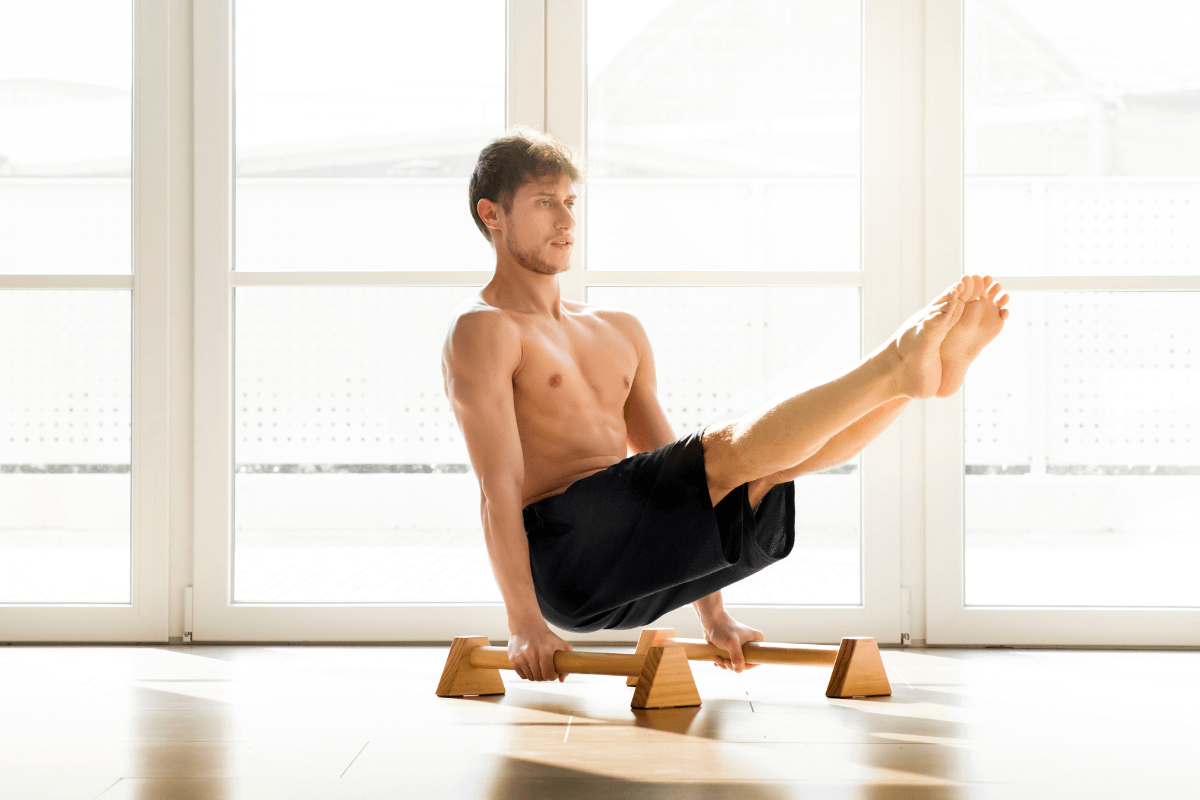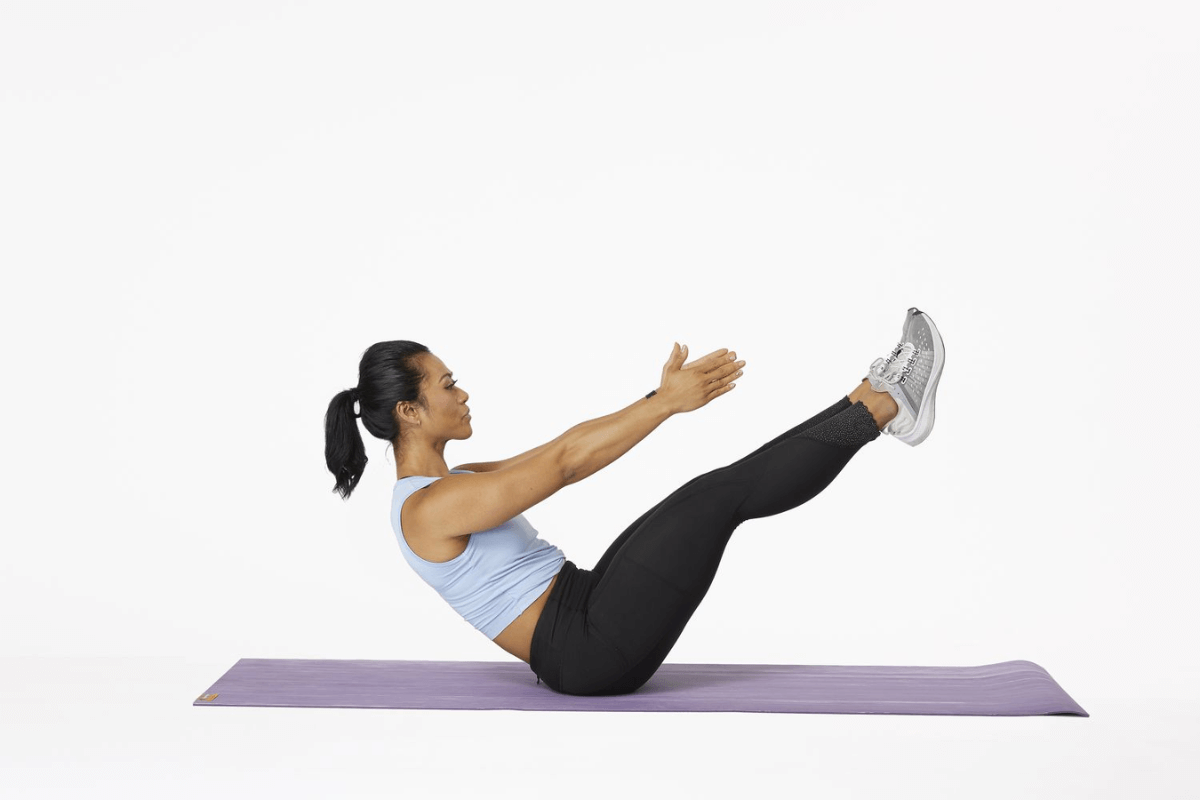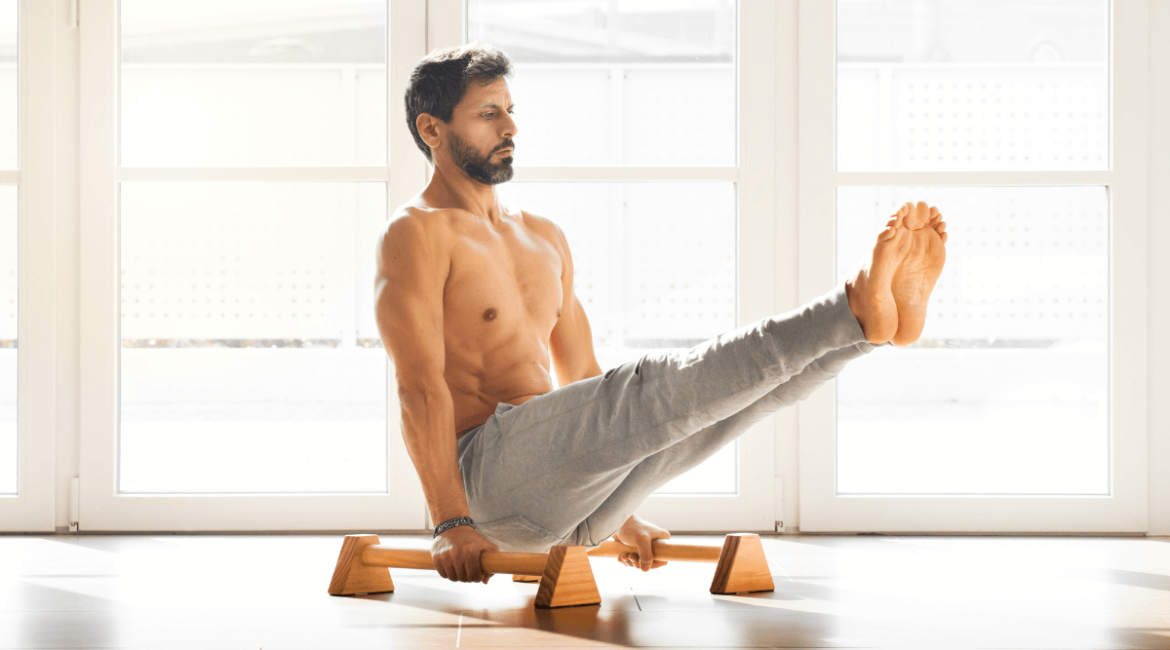Are you tired of doing crunches and sit-up? If so, you might be interested in trying out v-sit, an exercise that works your abs in a different way. V-sit is great for improving your balance and making your core muscles stronger. Even though they might seem difficult at first, they’re actually not too hard to learn.
Anyone can benefit from doing v-sit, no matter what level of fitness they’re at. Once you’ve learned how to do them safely and have built up enough strength in your core from doing other ab exercises, you can start incorporating v-sits into your routine.
If you want to learn more about v-sit—like how to do them correctly and why they’re good for you—just keep reading to find out!
General things about V-sit
What is v-sit?
What is the v-sit? The v-sit is an exercise aiming form your body into the shape of the letter ‘V’. If you’ve tried yoga or Pilates before, you might find some similarities with a pose called boat pose, but the v-sit takes things up a notch in terms of difficulty. Doing a v-sit can be done in two ways: you can either hold the position for a while, focusing on keeping your body steady, or you can do it in repetitions, moving in and out of the position.
The most challenging part is when you hold the position because you have to work hard to keep your balance and not fall over. It takes time to get strong enough to hold the position for a long time, so it’s common to start by just holding it briefly, then relaxing and doing it again. At first, you might only be able to hold the v-sit for a short moment and do just a few repetitions, but with practice, you’ll get better at it!
To do this exercise, you’ll need to lie down on a mat with your face pointing up. Then, you’ll lift both your arms and legs off the ground. For the full version of the move, you’ll want to keep your arms straight out in front of you, your back lifted off the floor at about a 45-degree angle, and your legs stretched out straight in front of you at the same angle.
Benefits of doing v-sit

V-sits offer a multitude of benefits that make them worth adding to your workout routine.
- Firstly, they enhance your balance by requiring you to maintain a centered position to avoid tipping over to the side. This aspect not only challenges your physical stability but also helps in improving your overall coordination.
- Moreover, v-sits engage various muscles in your body.
- They target not only your core but also your hip flexors, which are particularly vital for runners and anyone looking to strengthen their lower body. This comprehensive engagement of muscles contributes to a more effective and efficient workout session.
- Another advantage of v-sits is their simplicity in terms of equipment requirements. You don’t need any fancy machines or tools; all you need is a comfortable mat placed on the floor. This accessibility makes v-sits a convenient choice for home workouts or gym sessions alike.
- Furthermore, v-sits stand out from other common ab exercises due to their higher level of difficulty.
While this may not appeal to everyone, individuals seeking a more challenging workout will find v-sits to be a valuable addition to their routine. The complexity of the movement, with its various components working together, adds an element of coordination training to your workout, further enhancing its effectiveness.
How to do proper v-sit form
Guidance
Before you start doing the v-sit, it’s important to make sure you’re in the right position.

- Sit down on the floor with your legs stretched out in front of you and your toes pointing up towards the ceiling.
- When you lift your arms and legs up to form that 45-degree angle, remember to tighten your abs. This helps to engage your core muscles and make the exercise more effective.
- Pay attention to your posture as you do the v-sit. Keep your back straight and try to reach upward as you lift your legs and arms. And don’t forget to breathe! It’s important to keep breathing steadily throughout the entire movement.
- As you lower yourself back down to the starting position, remember to keep your abs contracted. This ensures that you’re getting the most out of the exercise and working those core muscles effectively.
- It’s important to take things slow and steady when you’re doing v-sits. As Kollath advises, try to move slowly as you lean back into the starting position. This helps to maintain control and ensures you’re performing the exercise correctly.
According to Losefo, one of the most crucial aspects of the v-sit hold is achieving the perfect alignment of your upper and lower body. To achieve this, she suggests engaging your pelvic floor muscles to stabilize your core while controlling your breath. This helps to elongate and straighten your body, creating the ideal shape for the exercise. By focusing on these key elements, you’ll be able to master the challenging v-sit with greater ease and effectiveness.
Common mistakes
Since the v-sit is a more challenging exercise, it’s quite normal to encounter some errors when you first try it out. Kollath points out one common mistake to watch out for: swinging your arms to create momentum as you lift them towards your feet.
This can happen when you’re trying to make the movement easier, but it’s important to avoid it. The key to the v-sit is to engage your abs to pull yourself upward, and relying too much on your arms defeats that purpose. To prevent this mistake, Katie recommends keeping your arms parallel to the floor as you reach upward. This helps ensure that your core muscles are doing the bulk of the work, leading to a more effective workout.
It’s crucial to maintain proper form when doing any abdominal exercise to avoid back pain or potential injuries. Losefo emphasizes that if any part of your core isn’t engaged or working as it should, it can lead to negative outcomes such as overuse injuries or discomfort. This highlights the importance of keeping your abs contracted throughout the entire v-sit movement.
Furthermore, Kollath warns against rounding your upper back or shoulders during the exercise, as this can increase strain on your lower back. It’s best to keep your back straight and your shoulders relaxed to minimize any unnecessary pressure on your spine. By focusing on maintaining good form and engaging your core muscles, you can ensure a safer and more effective workout experience.
V-sit modifications
If you find the full, long-held v-sit position a bit too challenging, don’t worry – you’re not alone! Many people need to start with modifications before they can do the full exercise. These modifications serve as stepping stones to help you gradually build the strength and skill needed to perform a v-sit. So, don’t get discouraged if you can’t do it right away – with practice and patience, you’ll get there eventually!

- Dead bug: One such exercise is the easier version of v-sit, which focuses on core stability. To set up for a dead bug correctly, follow Losefo’s advice: lie on your back with your knees and hips bent at a 90-degree angle, and extend your arms straight up towards the sky.
- Tuck-up: According to Kollath, in this exercise, you bend your knees and bring them towards your chest instead of reaching for the V shape as you sit up. If you’re still finding this challenging, she suggests providing more support by resting your hands on the floor behind your butt.
- Half v-sit: As described by Losefo, you anchor either your upper body onto your elbows or your lower body with bent knees and feet on the ground, while the opposite half maintains the straight V-position. This allows you to work on the exercise in stages, gradually building up to the full movement.
The takeaway
The v-sit is an advanced abdominal exercise that not only works your abs but also challenges and enhances your balance. The objective of this move is to achieve a V shape with your legs and arms extended at a 45-degree angle upwards. Initially, you might find it challenging to hold this position for an extended period, so it’s okay to start by moving into and out of the v-sit without holding it for too long.
Since the v-sit can be quite demanding, it’s a good idea to begin with modified versions of the exercise. Tuck-ups and dead bugs are excellent options to build up your strength and prepare your body for the full v-sit. When you’re ready to attempt the v-sit, remember to engage your abdominal muscles throughout the movement and proceed slowly and deliberately.
While the v-sit may be tough, it presents an exciting new challenge for your abdominal muscles. Embrace the difficulty and enjoy the journey of mastering this rewarding exercise!
If you need a more detailed guide for the V-sit, check out this YOUTUBE video!


Leave a reply